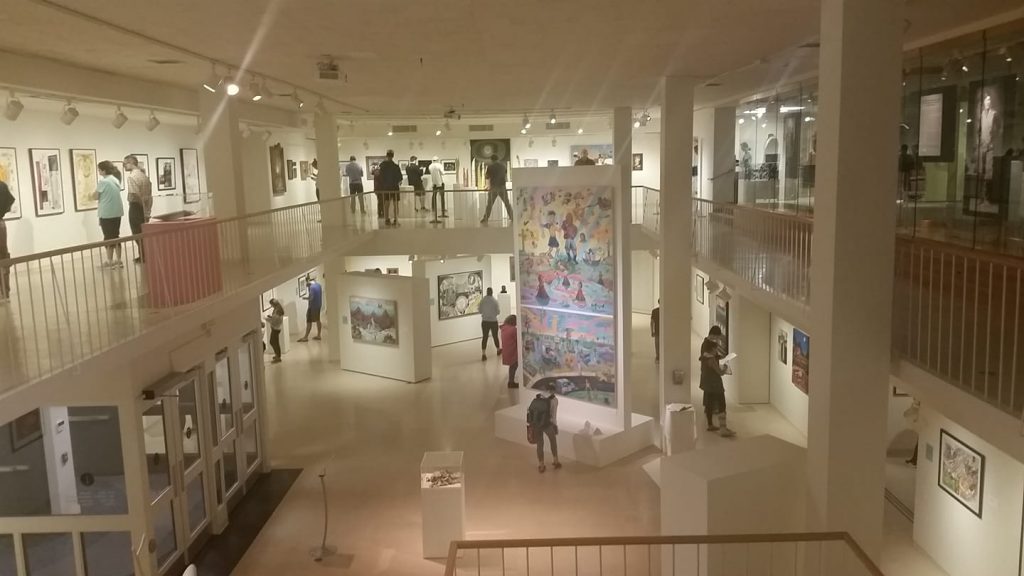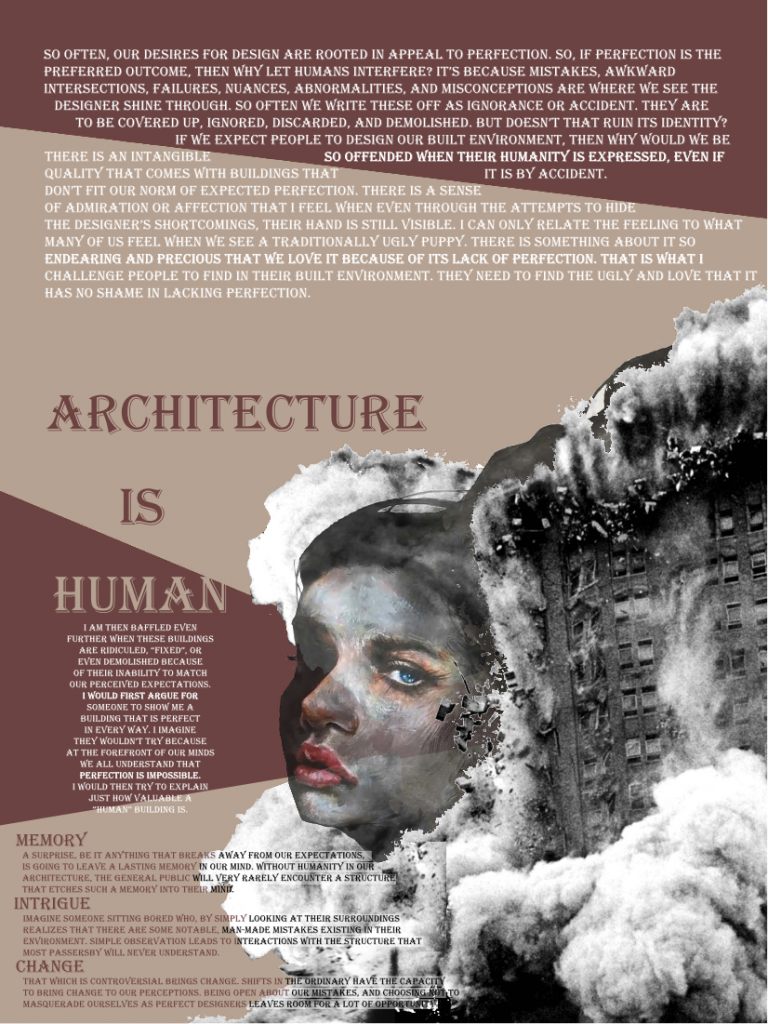Using (or Losing) the Art History Textbook: SECAC Conference Panel Review
Blog Post intro, Dr. Kathleen Pierce and Dr. Jenevieve DeLosSantos:
The impetus for our panel at SECAC 2019 in Chattanooga stemmed in equal parts from praxis and intellectual curiosity. On the one hand, we both found ourselves coming up against parallel questions and quandaries in the classroom, no doubt questions encountered by many Art History Teaching Resources readers. These were largely related to the textbook’s cost, content, and its tone—the way small linguistic choices, for example, operate as barely visible, and no doubt unintended, gatekeeping tactics. At the same time, we developed a scholarly interest in the role of the textbook in art history pedagogy. This included scholarly investigations into the ways various modes of communicating information to students—text, images, video, or audio—affect learning, as well as the role the textbook played in perpetuating particular narratives about the discipline. Conversations around the introductory textbook—and the survey broadly speaking—have been ongoing and increasing over the past few years, picking up especially in 2014 and 2015 with Art History Teaching Resources articles by Kris Belden-Adams and a SECAC panel thinking critically about the pedagogical role of the survey convened by Mary Slavkin. In the years since, more and more instructors have eliminated or reworked the role of the textbook in their classroom; at the same time, web-based Open Educational Resources (OERs) have become more freely available, of increased quality, and more globally and temporally diverse in their coverage. Our goal for the panel was to illuminate new thinking, at once theoretical and in practice, about the introductory textbook, joining big picture questions about history, theory, and the goals of the discipline with smaller, but no less important, questions rooted within the everyday of pedagogical practice. The blog post that follows provides summaries of each speaker’s talk that we hope will help guide conversations as Art History Teaching Resources readers update their syllabi for the spring semester.
Dr. Jennifer Webb: “What went wrong in Unit 3: Reflection on my 100-person survey after Replacing the Art History Textbook”

In “What went wrong in Unit 3: Reflection on my 100-person survey after Replacing the Art History Textbook,” Dr. Jennifer D. Webb shared how Julia Sienkewicz’s argument that the classroom is the best place to teach people to “see” and “engage critically” and Glenda M. Swan’s 2016 article guided the redesign of her own lower-level, History of World Art 1 course. She talked about how, using backward design, she moved from big themes and learning objectives, to measures (exams and assignments), and finally to instructional methods and content. Before highlighting “what went wrong,” Dr. Webb walked attendees through the first two weeks of her class; this “focused introduction” includes a visit to the Tweed Museum of Art on day 1, highlights “key” questions, and emphasizes that, at the end of the semester, the students should have more questions than answers; together the class will “make the strange familiar and the familiar strange” (Swan 2016, 7-8). To conclude, Jennifer talked about the issues in Unit #3 during the fall of 2018; a large number of the students struggled on the exam and many seemed either bored, overwhelmed or both. The unit covered too much and the required read-and-respond homework assignments that had been used to “open” each of the previous units came too late to spark interest. She shared the changes made the week of the conference—including the introduction of a new assignment and a group exercise—and said she hoped that another overhaul would not be needed in Fall of 2020. Dr. Webb concluded her talk by noting that the redesign in 2018 led to higher average final grades and that the students left the classroom not only able to ask more nuanced questions about the study of visual culture but also with improved critical analysis skill.
Dr. Kristin Barry: “Embracing the Manifesto in Art and Architecture History: Self-Discovery and Analysis through Critical Theory”
Dr. Kristin Barry’s talk proposed centering the artistic and/or architectural manifesto as a locus of study in the classroom. Using the manifesto as this unifying agent in the education of architectural history in particular presents students with primary source information, which reveals the politics, advocacies, and influences of individual players and epochs, and how these ideas manifest into policies, practices, and projects. When architectural history is imagined as a sequence of these reactions, architectural choices and design decisions are manifested in context, as a consistent series of ethical or unethical moves that result in real consequences or triumphs. Presenting a survey of modernisms in particular through this lens ensures that students are exposed to the critical theory inherent in modernisms and understand the way that partners and players were thinking when developing groundbreaking design. Embracing the Manifesto presents the opportunity to approach required readings through a series of first-person perspectives associated with real modernism movements, rejecting the “sage” traditional textbook, and legitimizing the design ideas that students are faced with, helping them to understand critical theory in context. After a careful study of these manifestos, asking students to design and write their own challenges them to focus their own thoughts on architecture and how they can use these to inform the zeitgeist.
Dr. Emily Goodman’s Summary: “Adding More to the Conversation, or How to Decolonize a Syllabus of Art by Dead White Men”

Dr. Emily Elizabeth Goodman’s presentation focused on how performing a syllabus audit and abandoning the traditional survey textbooks allowed her to engage in feminist, anti-racist, and decolonizing pedagogical tactics while still addressing the major works of the Western art historical canon, pieces that are overwhelmingly made by cisgender, straight, white, men. Following participation in an anti-racist faculty development workshop, Goodman re-examined her syllabi and count how many women and scholars of color are represented in her reading lists; in so doing, she found that her classes were overwhelmingly dominated not only by art by white men, but also by scholars from this same demographic. This meant that her courses were not critically engaging with issues of patriarchy, racism, and colonialism in a meaningful way, as they were not incorporating the voices of those subjugated by those systems of oppression. Moreover, in failing to include the voices of marginalized individuals, her classes further alienated students from those groups by replicating the ideology that the university classroom is comprised of scholars from a single demographic. In abandoning the survey textbook—and the authoritative and monolithic approach it often employs—she was able to broaden the voices and sources her students were engaging with in the classroom, including incorporating non-textual sources that allowed for students to see and hear from members of oppressed groups relaying their own experiences with the systems and structures of domination often perpetuated in the art that comprises the Western canon. Furthermore, in moving away from the survey textbook to a more diverse set of readings, Goodman is able to encourage her students to consider the ramifications of racism, patriarchy, and colonialism on how these art objects are understood today.
Dr. Jenevieve DeLosSantos: “Digital Pedagogy in the Analogue Classroom: A Case Study in Using Digital Tools to Replace the Survey Textbook”
Dr. Jenevieve DeLosSantos’s presentation explored the pedagogical possibilities of replacing the traditional textbook with digital tools in the survey course. Citing the original object-based role of Helen Gardner’s 1929 Art Through the Ages, she argued that the books once used in conjunction with museum collections are out-moded tools in comparison to today’s digital OERs. Discussing her class as a case-study, she shared her use of the electronic response system Top Hat to house assigned OERs and combine these course materials with a variety of in-class and out-of-class questions. From discussion posts to interactive, click-on-target questions, the use of the response system in conjunction with video and essay OERs forced students to routinely engage with objects themselves. Citing Steven Zucker and Beth Harris’s discussion of Smarthistory, Dr. DeLosSantos argued that the presentation of objects from multiple perspectives with details and in-situ shots reinforced visual analysis skills better than the textbook’s flattened, off-scale reproductions. Moreover, her presentation suggested that the incorporation of video materials with more targeted reading assignments might be supported by the scholarship of Multimedia Learning. Specifically, she discussed how Cognitive Load Theory suggests that learning complex tasks is better supported by balancing audio and visual modes of learning. Thus, the traditional survey emphasis on visual analysis can be better supported with spoken, narrated content like that of video resources, rather than text-based resources alone.
Sources:
Bowen, Ryan S., (2017). Understanding by Design. Vanderbilt University Center for Teaching. Retrieved November 27, 2019 from https://cft.vanderbilt.edu/understanding-by-design/.
Dietrich, Linnea, and Diane Smith-Hurd. “Feminist approaches to the survey.” Art Journal 54, no. 3 (1995): 44-47.
Fink, L. Dee. Creating significant learning experiences: An integrated approach to designing college courses. John Wiley & Sons, 2013.
Martin, Philip W. “Key aspects of teaching and learning in arts, humanities, and social sciences.”
A handbook for teaching and learning in higher education: Enhancing academic practice. Edited by Heather Fry, Steve Ketteridge, and Stephanie Marshall. Routledge, 2008: 300-322.
Sienkewicz, Julia A. “Against the “Coverage” Mentality: Rethinking Learning Outcomes and the Core Curriculum.” Art History Pedagogy & Practice 1, no. 1 (2016): 5.
Sienkewicz, Julia A. “Critical Perception: an Exploration of the Cognitive Gains of Material Culture Pedagogy.” Winterthur Portfolio 47:2/3 (Summer/Autumn 2013): 117-138.
Swan, Glenda M. “Building a Foundation for Survey: Employing a Focused Introduction.” Art History Pedagogy & Practice 1, no. 1 (2016): 6.